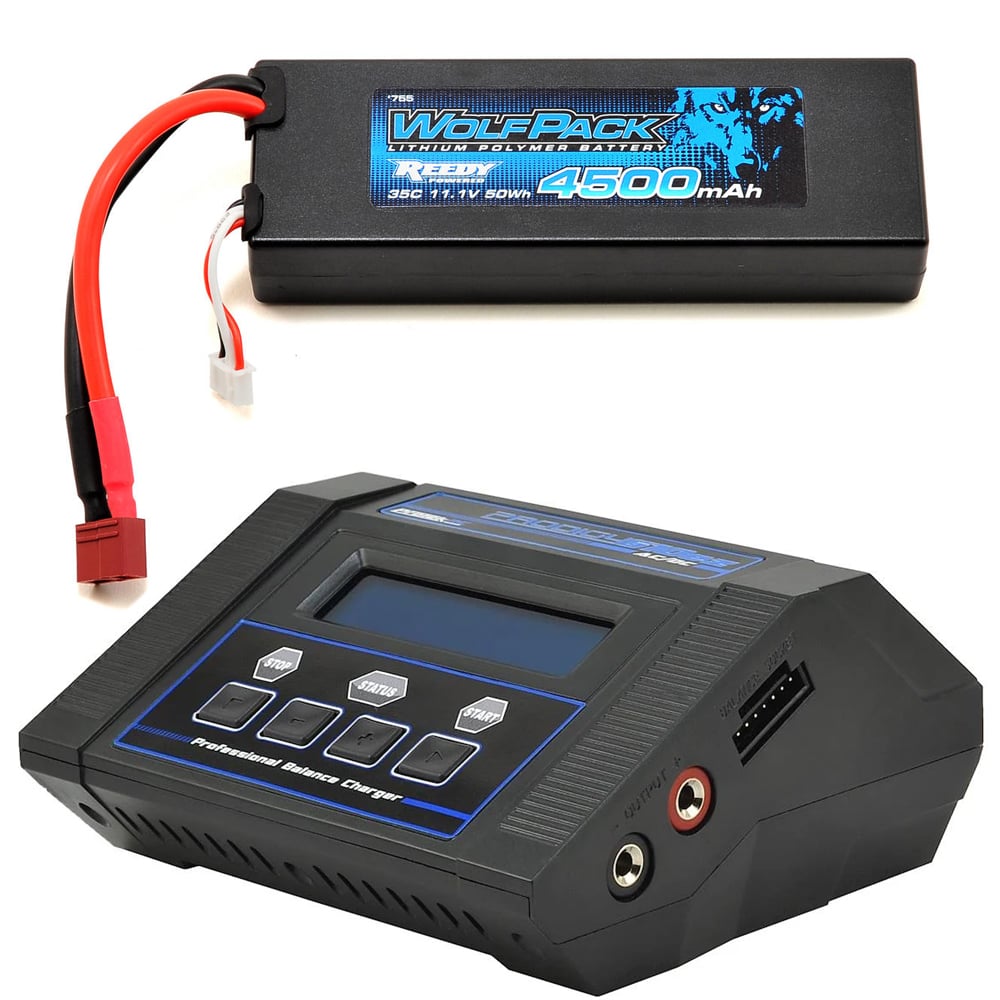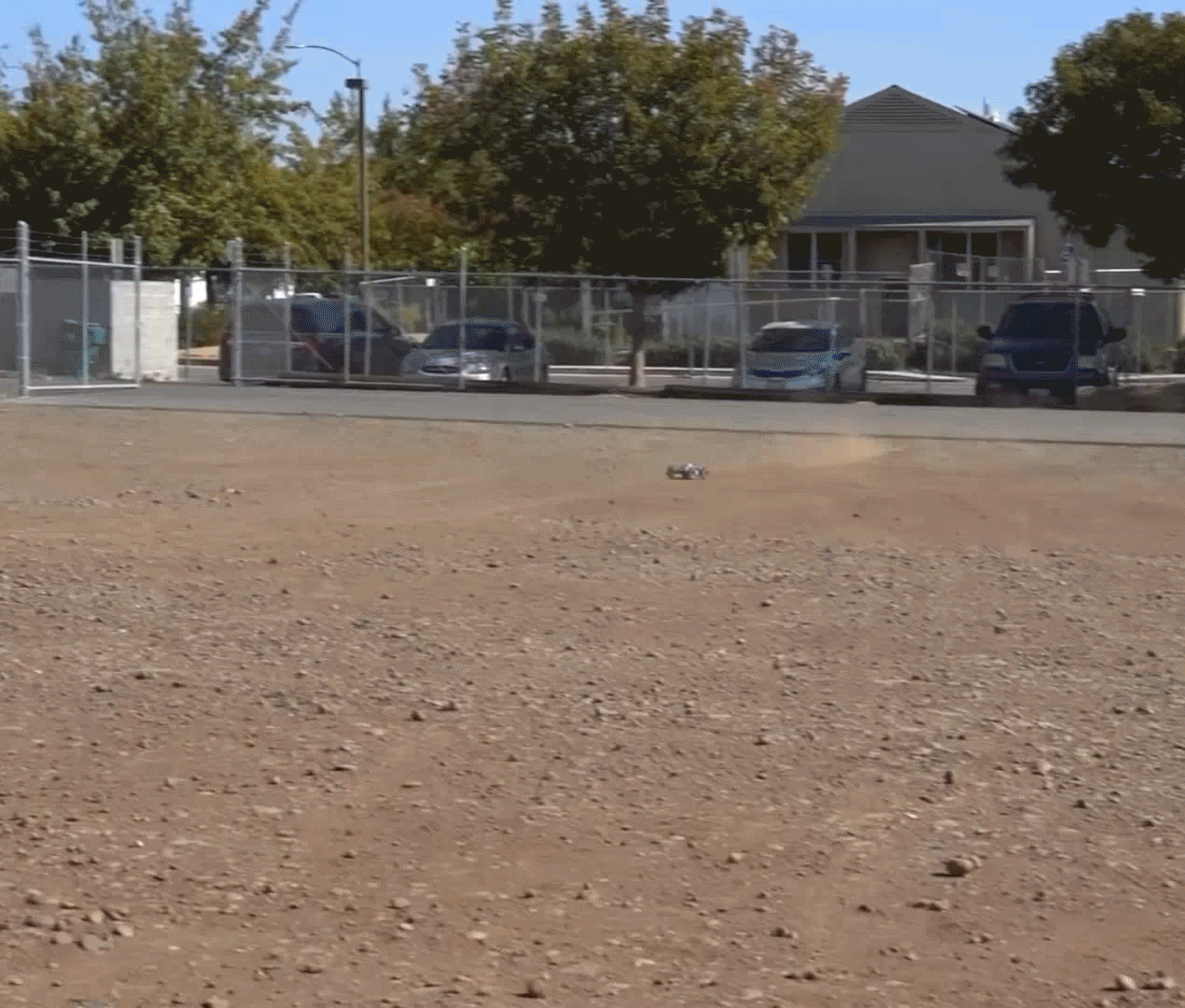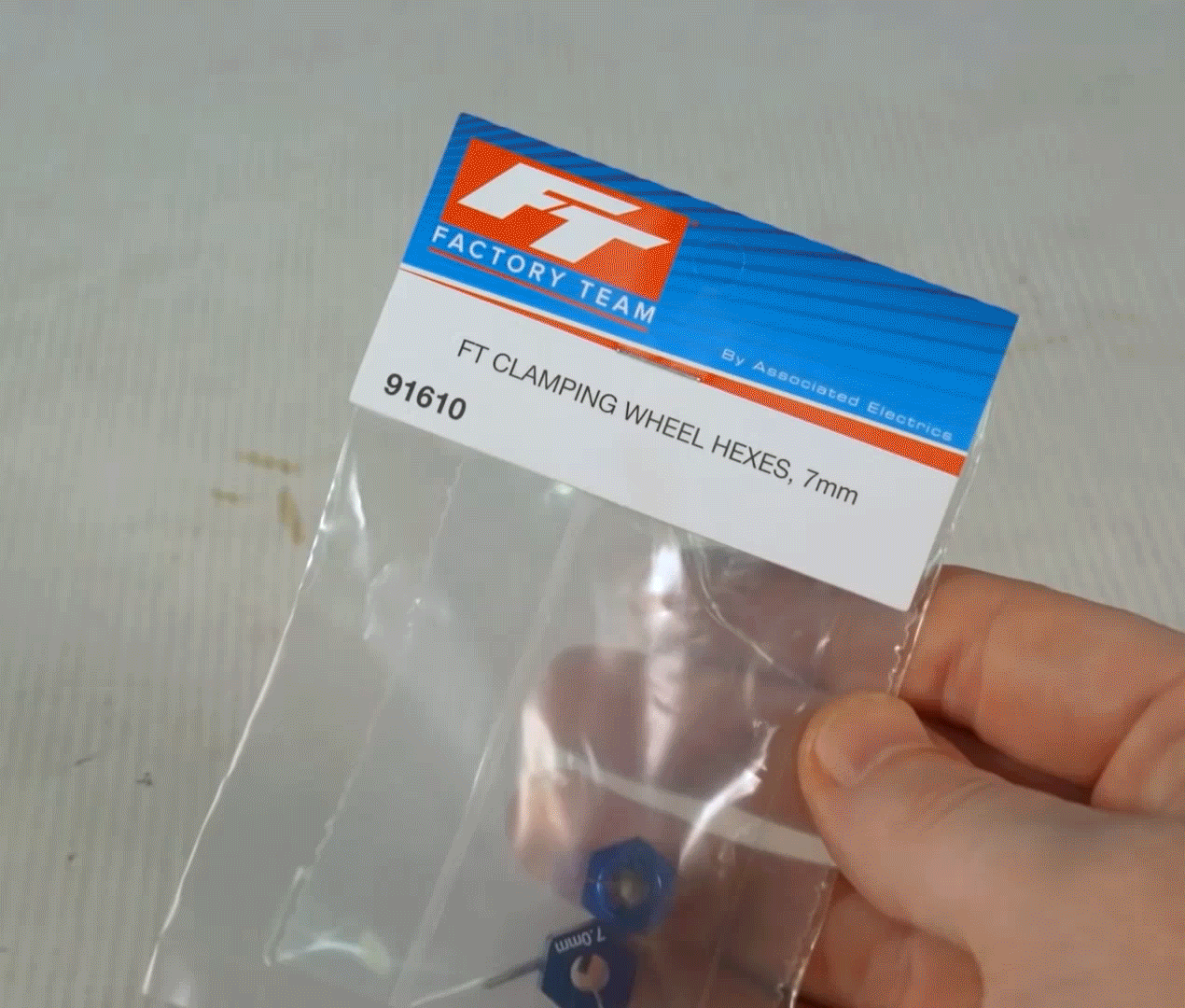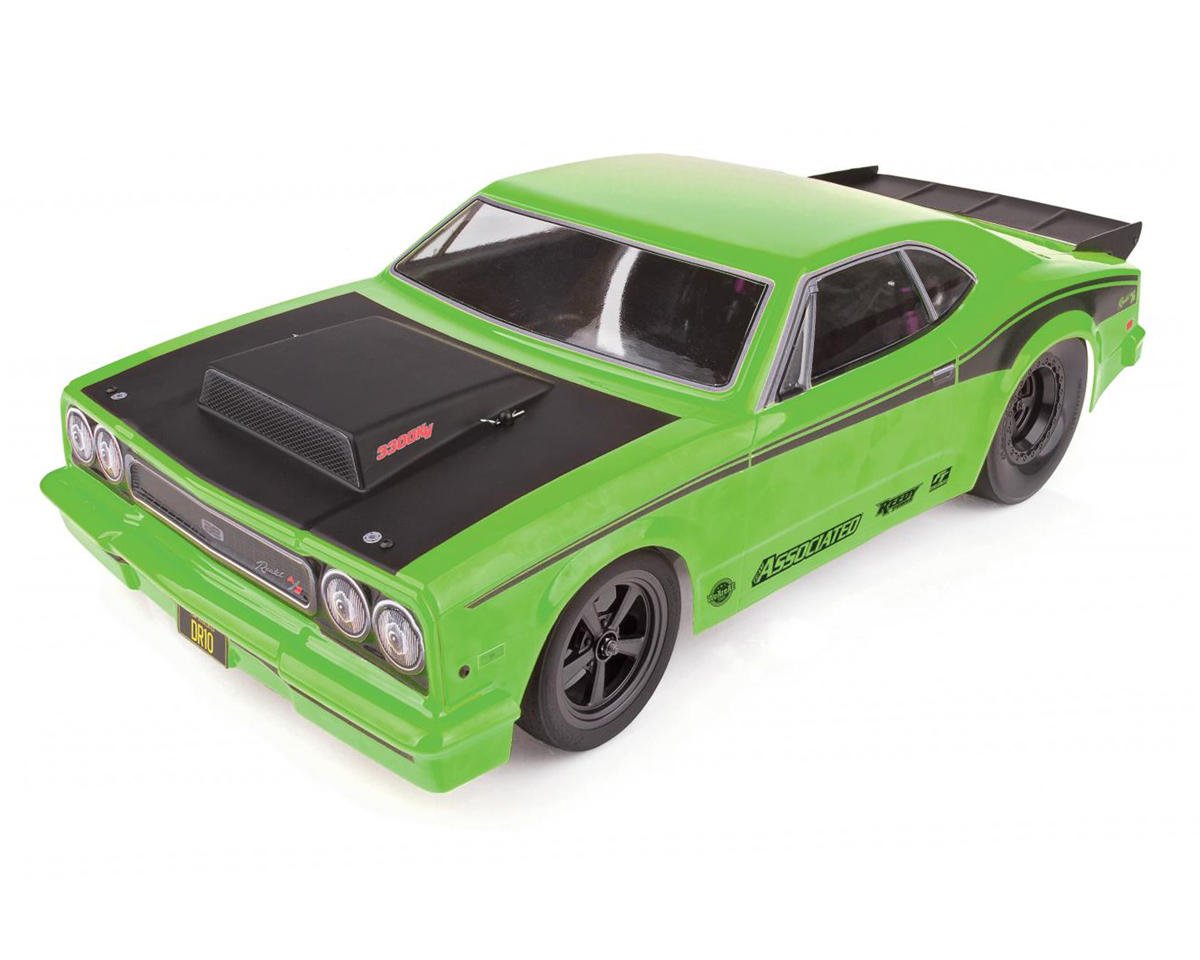Review - RB10 2WD 1/10 Brushless Buggy from Team Associated
The Team Associated RB10 2WD buggy is based on the world championship-winning Team Associated buggies, except it’s ready-to-run. So, is it a race car or a basher? The RB10 may look like a regular buggy on the surface, but something tells us that’s just the beginning.
So, what can you do with the RB10? We put it to the test.
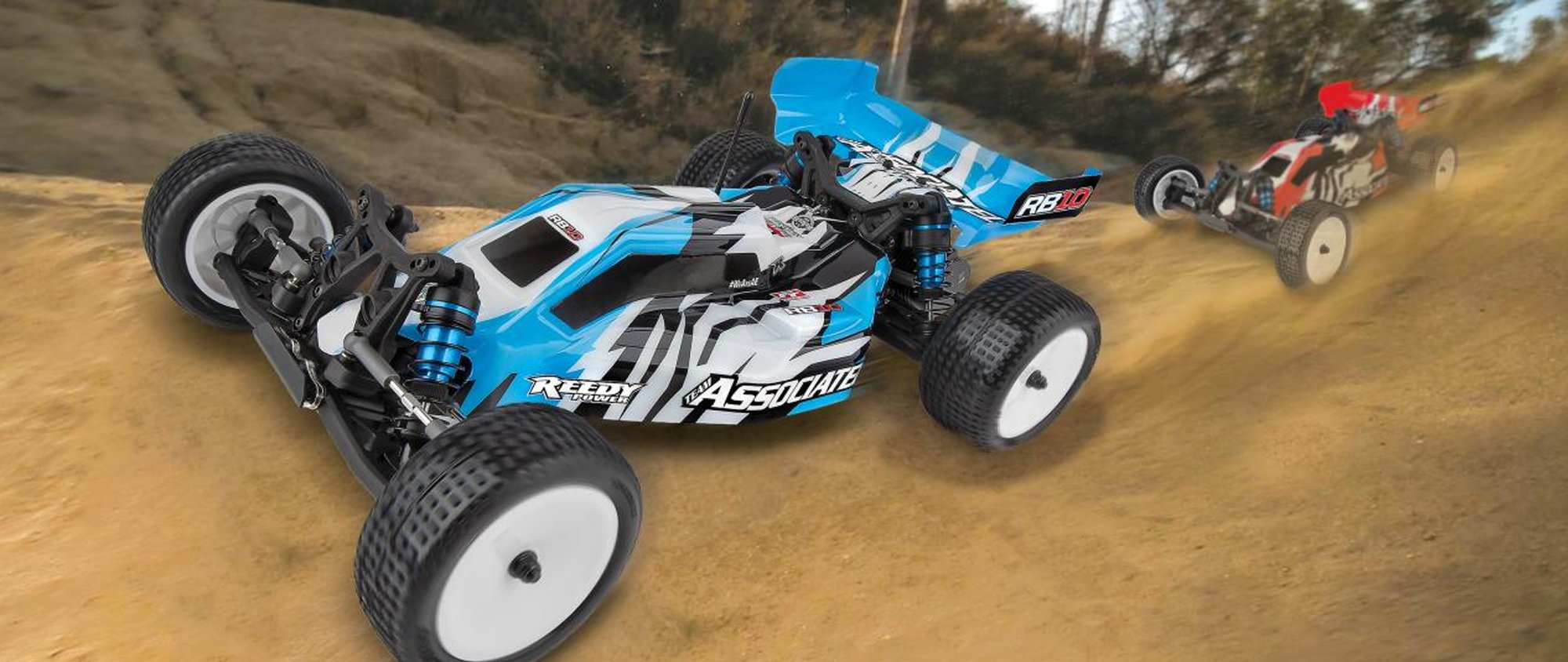
The RB10 is the newest RTR car from Team Associated. It offers a fully ready-to-run off-road vehicle with water-resistant brushless electronics capable of 3S LiPo use, DVC gyro stability, and more. For the guy looking to start 2WD buggy racing, the readiness and completeness of the RB10 make it a no-brainer as a great starting point. The buggy is fully ready-to-go, assembled with electronics and a painted body. However, four AA batteries are required to power the included transmitter, and they are not included.
A LiPo battery is also required, and it needs to have a T-style connector. For those new to radio control and that don’t already own R/C batteries and chargers, the RB10 combo is the way to go. It includes this 2S LiPo and LiPo balance battery charger. The combo is a good starting point but doesn’t provide maximum power, so if you want that, you’ll need a more powerful 3S LiPo battery.
How fast is the Team Associated RB10 Buggy?
Using our GPS speed meter and a fully charged 2S LiPo battery, we achieved a top speed of… 20MPH. Next, we swapped the batteries and tried again, using a 3S LiPo battery, and after a few passes, we reached a top speed of 31MPH. It should be said that the gearing in the RB10 is pretty conservative and leans more towards lower-end torque than maximum RPMs.
Note: Higher top speeds can be reached with a gearing swap, but be careful not to overheat the electronics, especially on hot days.
RB10 Electronics
At the heart of the RB10 electronics is a brushless, sensorless system featuring the Reedy 3300kv brushless motor, secured to an aluminum motor plate. Pinion gears are 48P, and the system incorporates an adjustable slipper clutch.
The ESC is the Reedy SC600-BL brushless; it’s a 2S and 3S LiPo compatible unit with a T-style connector, and it’s water-resistant, so it’s ok to get a little wet. The same ESC and motor systems are used in all newer Team Associated RTR cars.
The servo used is the reedy 1523MG metal gear servo, and it’s equipped with a servo saver horn to absorb any impact energy.
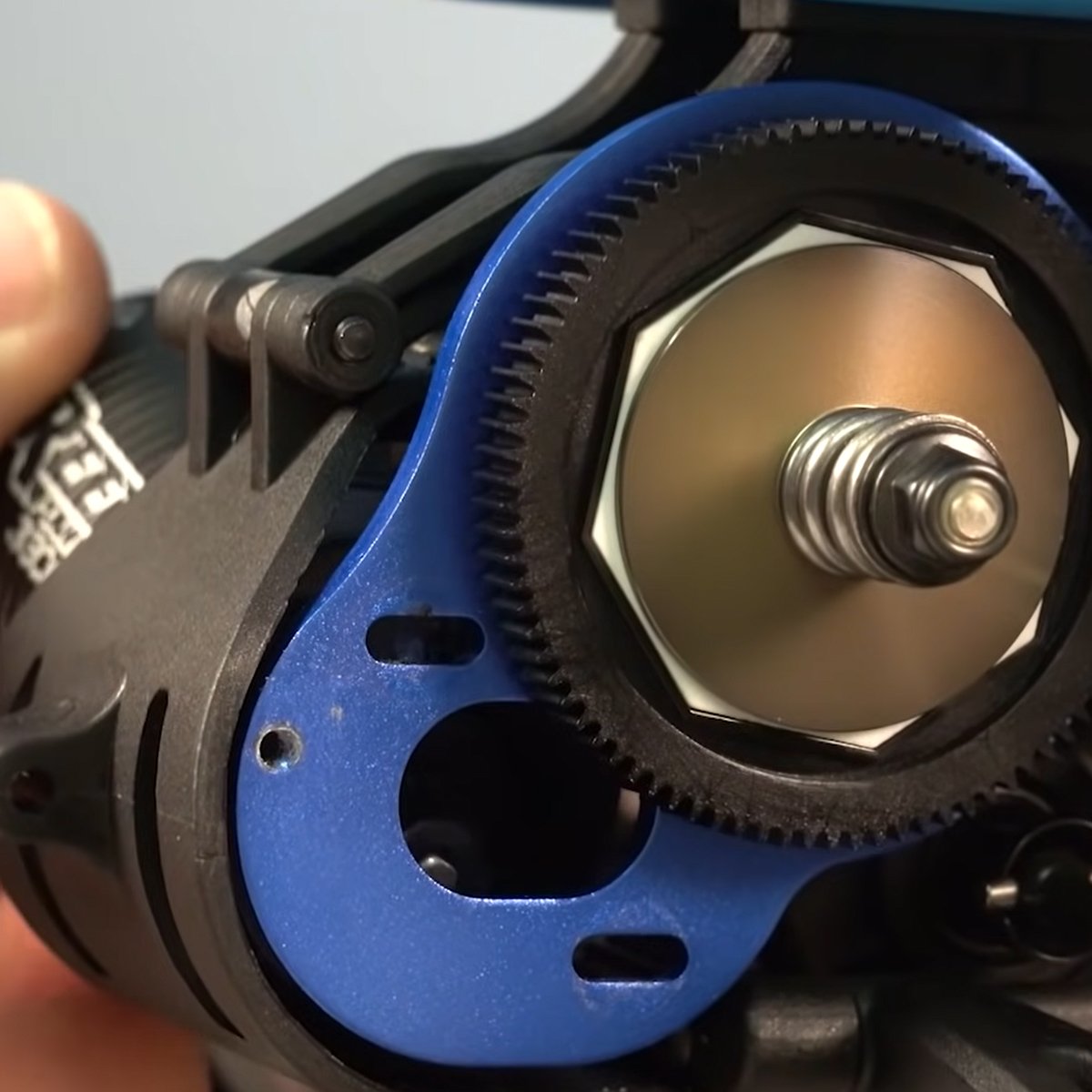
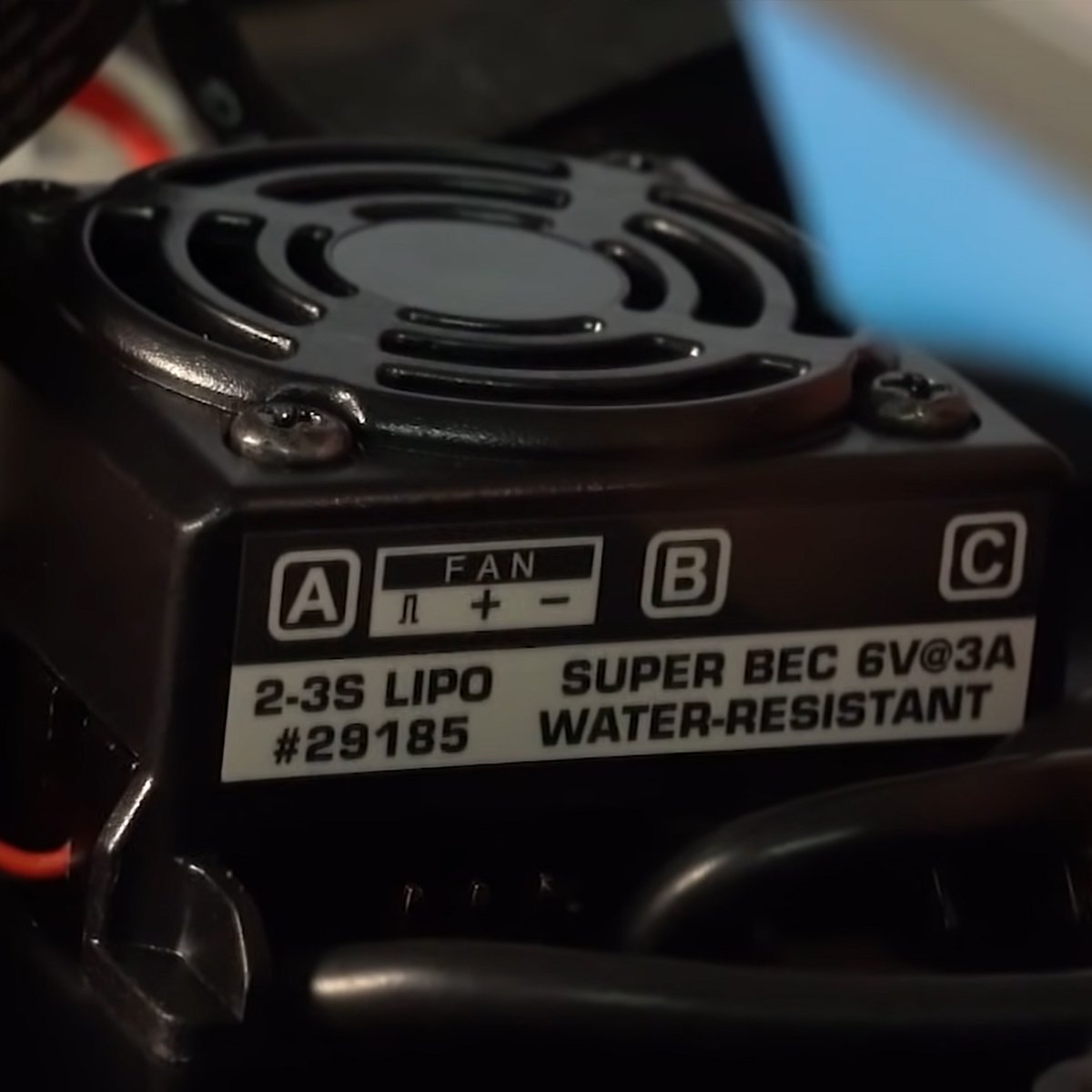
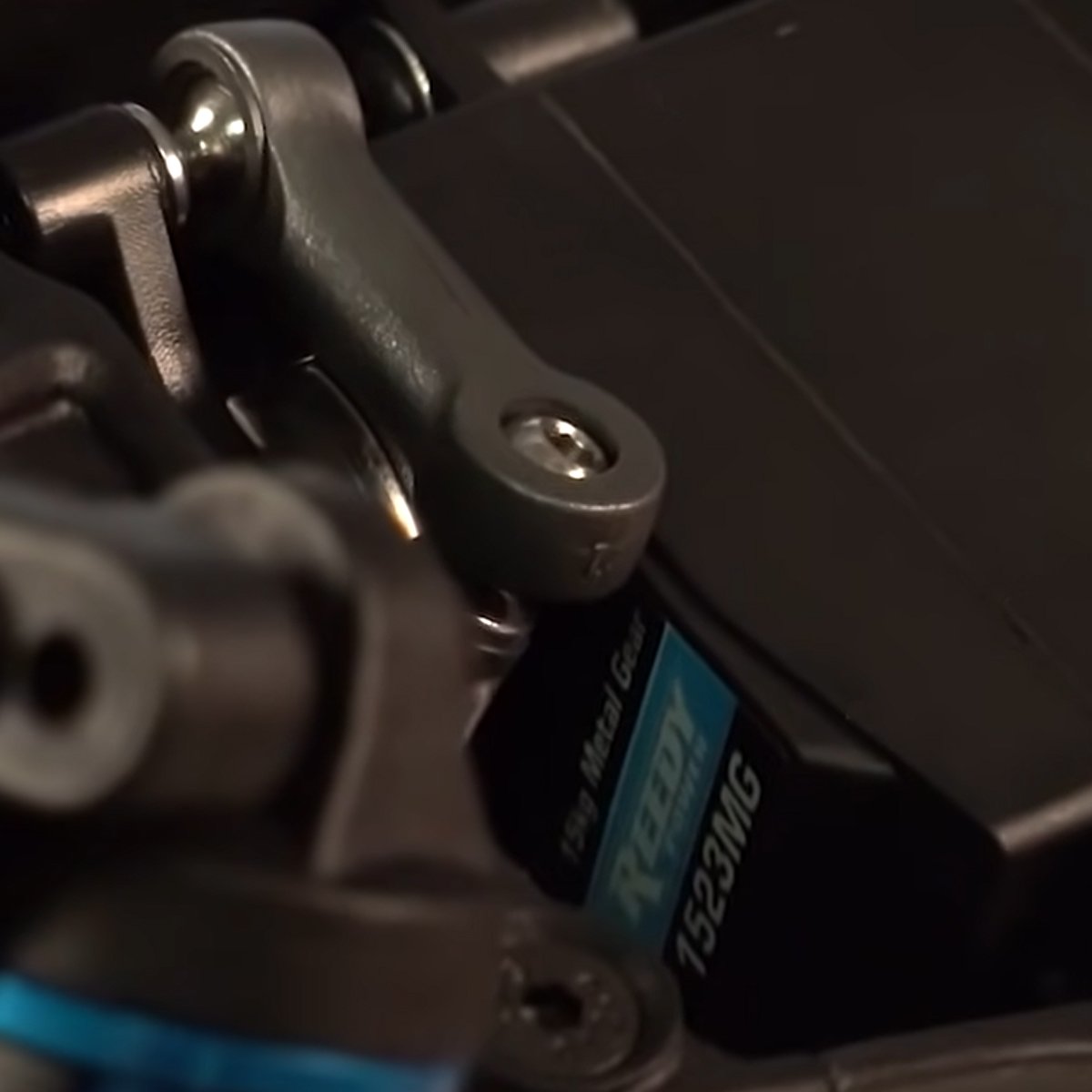
The last piece of electronics is the 2-channel transmitter system, which features a variety of common adjustments, like steering and throttle trims, paired with a 2-channel receiver with DVC, or Dynamic Vehicle Control counter-steers for you when the rear end gets loose. Unfortunately, this receiver is not water-resistant like the other electronics, and it mounts in a gasket sealed receiver box to keep it dry.

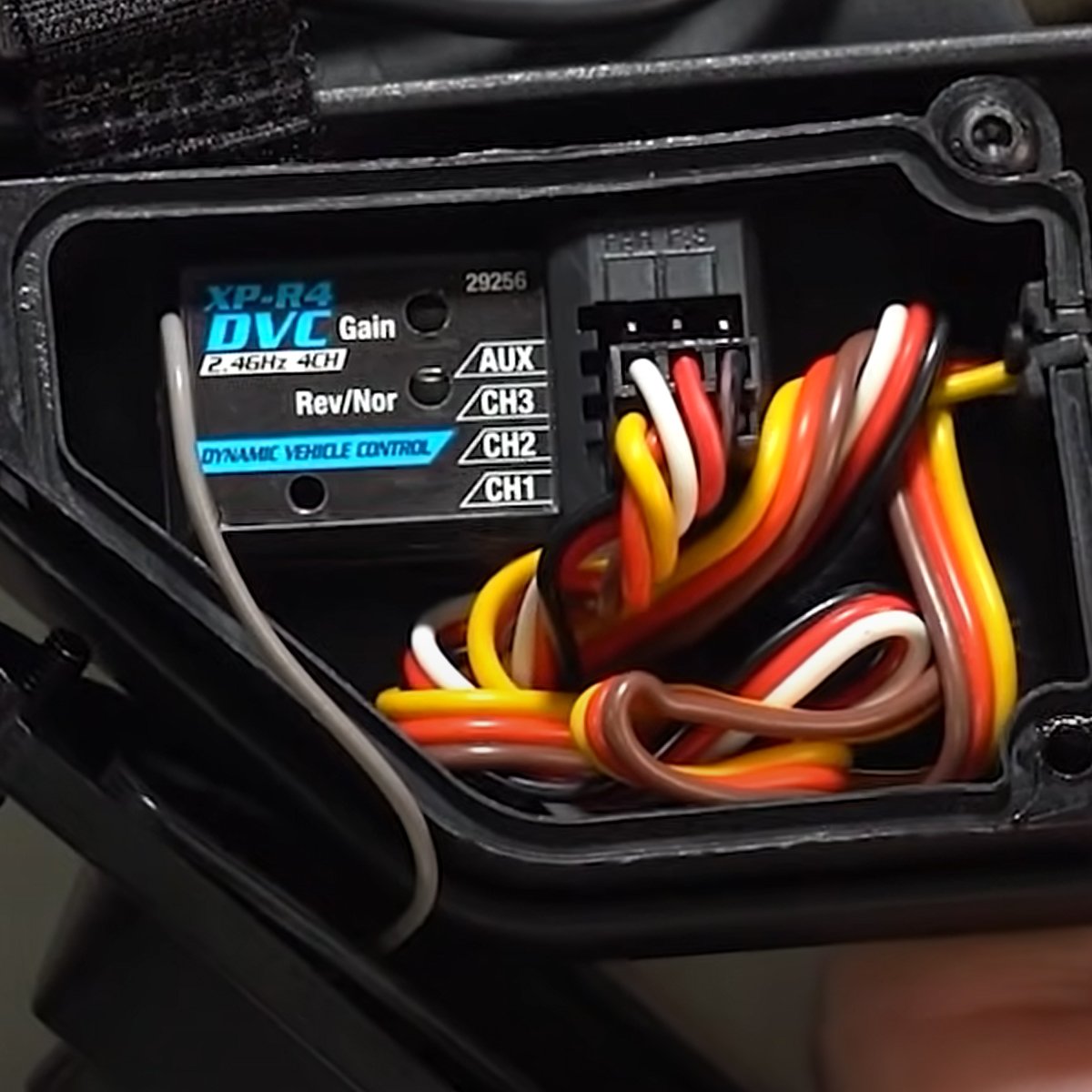
Our Speed Tests
While running our speed tests, we noticed that the stability gyro sensitivity was set too high and occasionally produced speed wobbles on our front tires. Speed wobbles are common with all stability systems, and that’s why we recommend dialing it down or turning it off altogether when performing speed runs. The gyro is adjustable on the receiver. The RB10 is 2WD, so the gyro is a considerable help with loose dirty conditions, so we merely dialed it down a little.
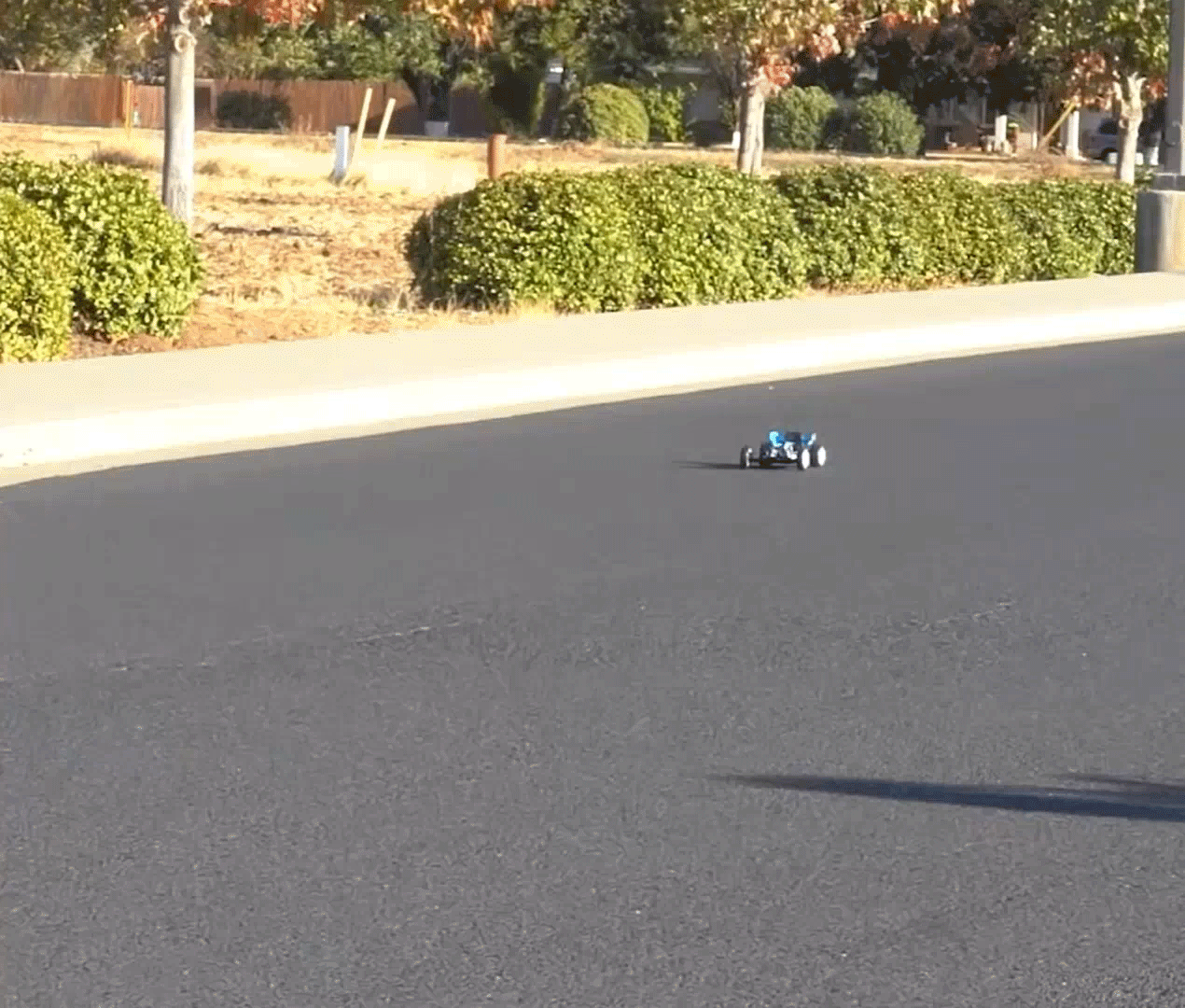
For dirty and dusty conditions, this is the parking lot of our local R/C track, the Silver Dollar RC Raceway, and the surface is loose with big rocks everywhere. The ground clearance out of this RB10 is pretty minimal with its race-inspired low center of gravity chassis, but the RB10 still thrashes, flinging rocks and bouncing off of them. The knobby tires included with the RB10 features a rubber compound suited for long-lasting life, not high traction, so more suitable tires and compound for the surface is a great upgrade.
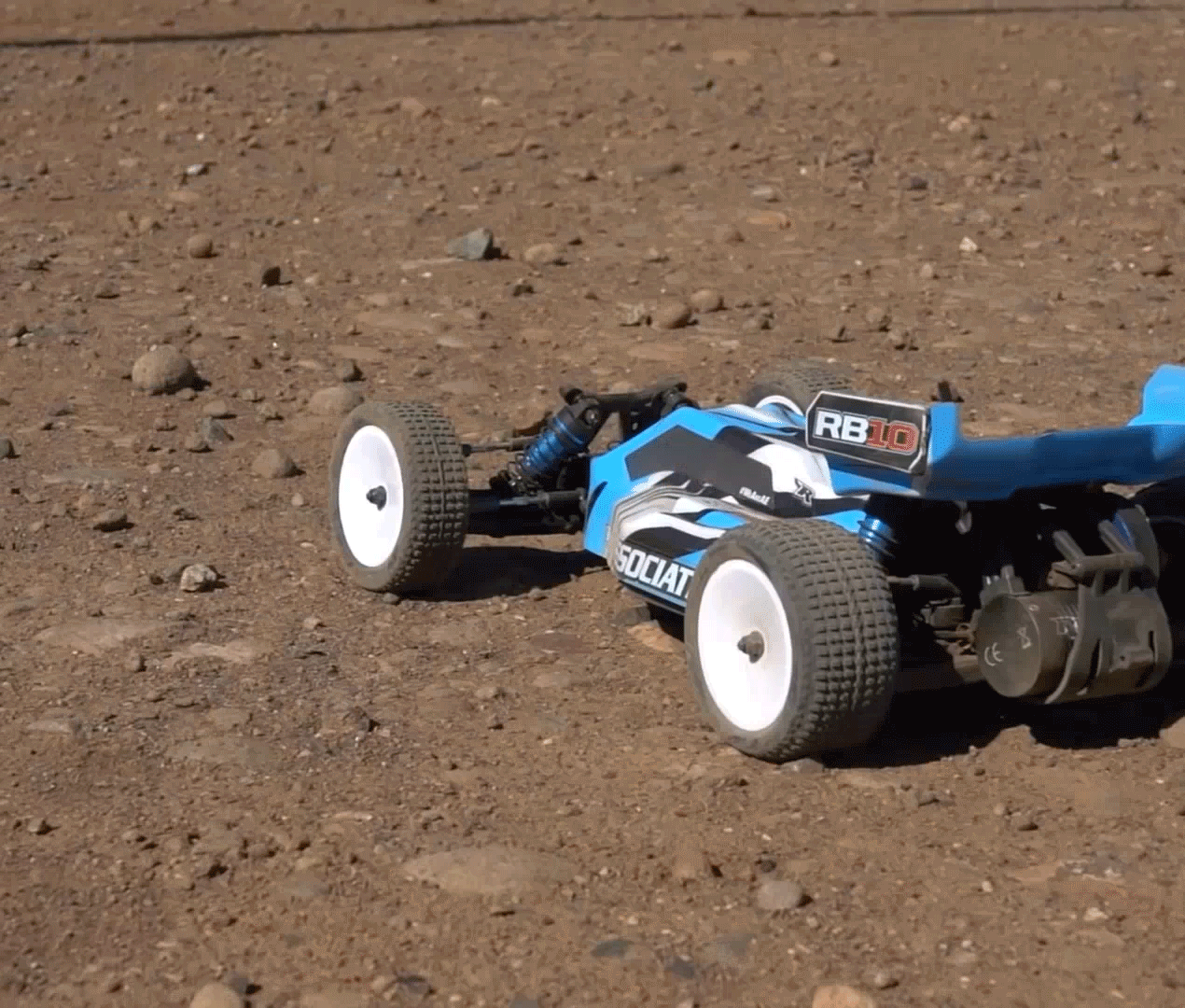
We tested it in taller dead grass, and the buggy had momentum at first, but as we slowed down, it got high-sided and stuck. So, this got us thinking, can we just put bigger tires on this car?
Well, it turns out you can. We added 1.9” Hyrax rock crawler tires with a diameter of 4.75” on the RB10 without any issues or rubbing. These taller tires provide more ground clearance, and their larger diameter over the stock tire performed like gearing up the transmission, so the buggy ran faster.
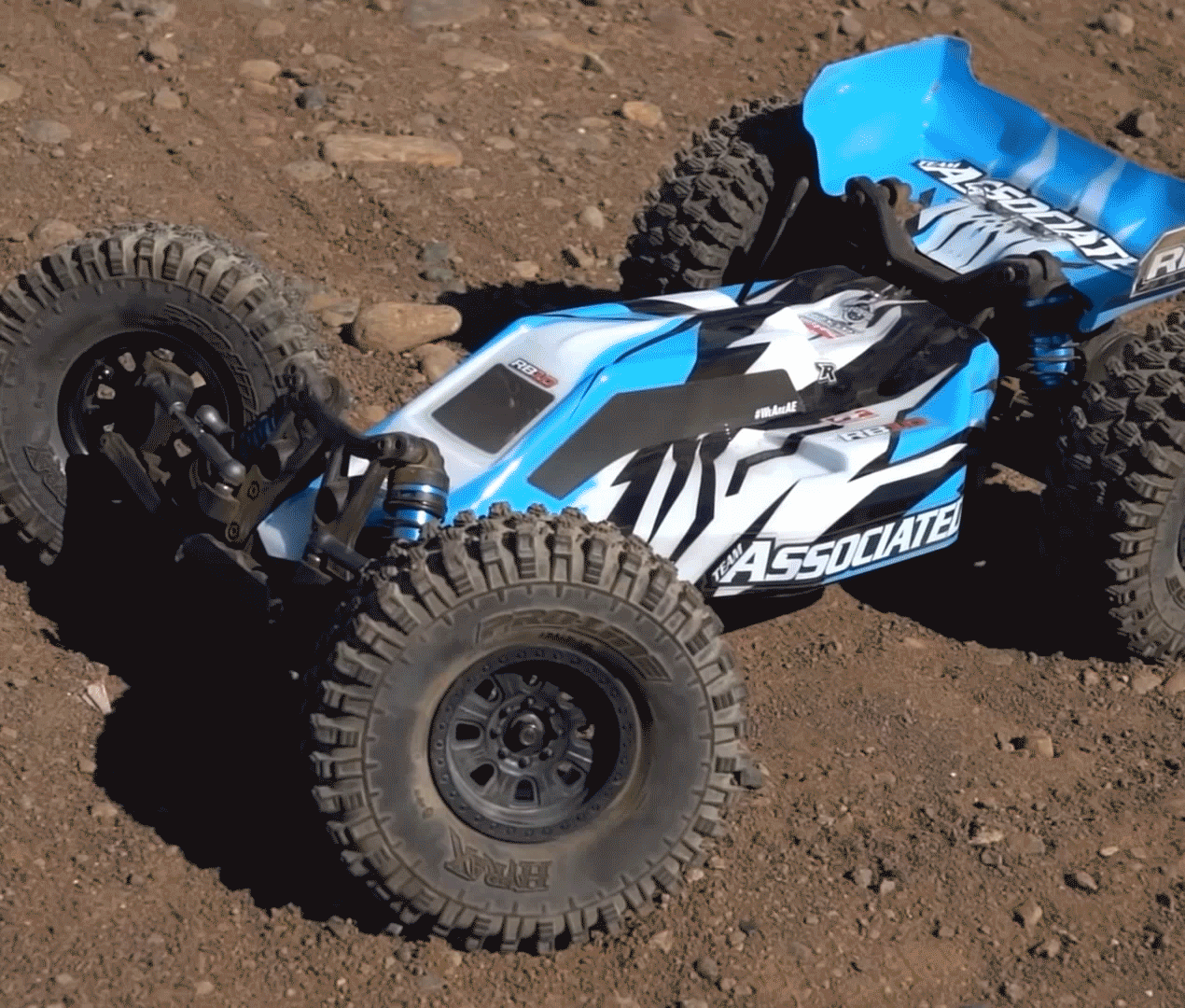
The biggest challenge with using these tires was keeping the car from flipping back because it really wanted to wheelie. However, clearance over the rougher terrain was improved. In addition, the taller tires added a bit of stability to the RB10.
After our runs, we made our first upgrade to the RB10, which was these 7mm aluminum wheel hexes. They clamp onto the axle and pin and retain the same width as the stock hexes. The aluminum hexes are more durable and robust than the stock plastic ones, especially when laying down big power.
Creating a Drag Buggy
If you’re familiar with the Team Associated SR10 dirt oval car and the DR10 drag car, then you probably know all these platforms are pretty similar to each other and are somewhat module, where you can take things from one car and add it to another.
So, with that, we bring you the RB10 Drag Buggy. All we did here was add our DR10 drag car tires and wheels, and they fit right on with no issues, and then we took off the DR10 wheelie bar and installed it on RB10, and it’s a direct fit. As a drag car, the RB10 feels just like the DR10, except with a shorter chassis.
Would you want to compete with the RB10 against proper drag cars in a legitimate race? Probably not, but would you want to race your buddies in the Walmart parking lot or bash around the neighborhood? YES, absolutely! If you wanted to compete seriously, you could swap a few parts, like a longer drag chassis, a drag specific body, tires, and a wheelie bar.
Carpet Track Racing at the Amain Track
There is only one thing left to talk about, and that’s driving the RB10 on the track, which surprise, surprise, performs great. Now a couple of notes here; this is a new carpet track that AMain is putting together, and there are no jumps yet. We changed the RB10 tires to the Schumacher carpet tires front and rear for traction, and they hook up great. The RB10 diff fluid is 10 or 15k, and it feels great. There is a lot of body roll, though, so a couple of sway bars would also serve us.
The rear motor layout of the RB10 is best on dirt surfaces, but it still kicks butt on the carpet and occasionally pulls a wheelie. We didn’t change anything other than the tires, and the performance was better than expected. The only issue exposed by the high traction carpet is the softness of the steering and servo saver, which you’d want to tighten up for racing or leave loose for bashing.
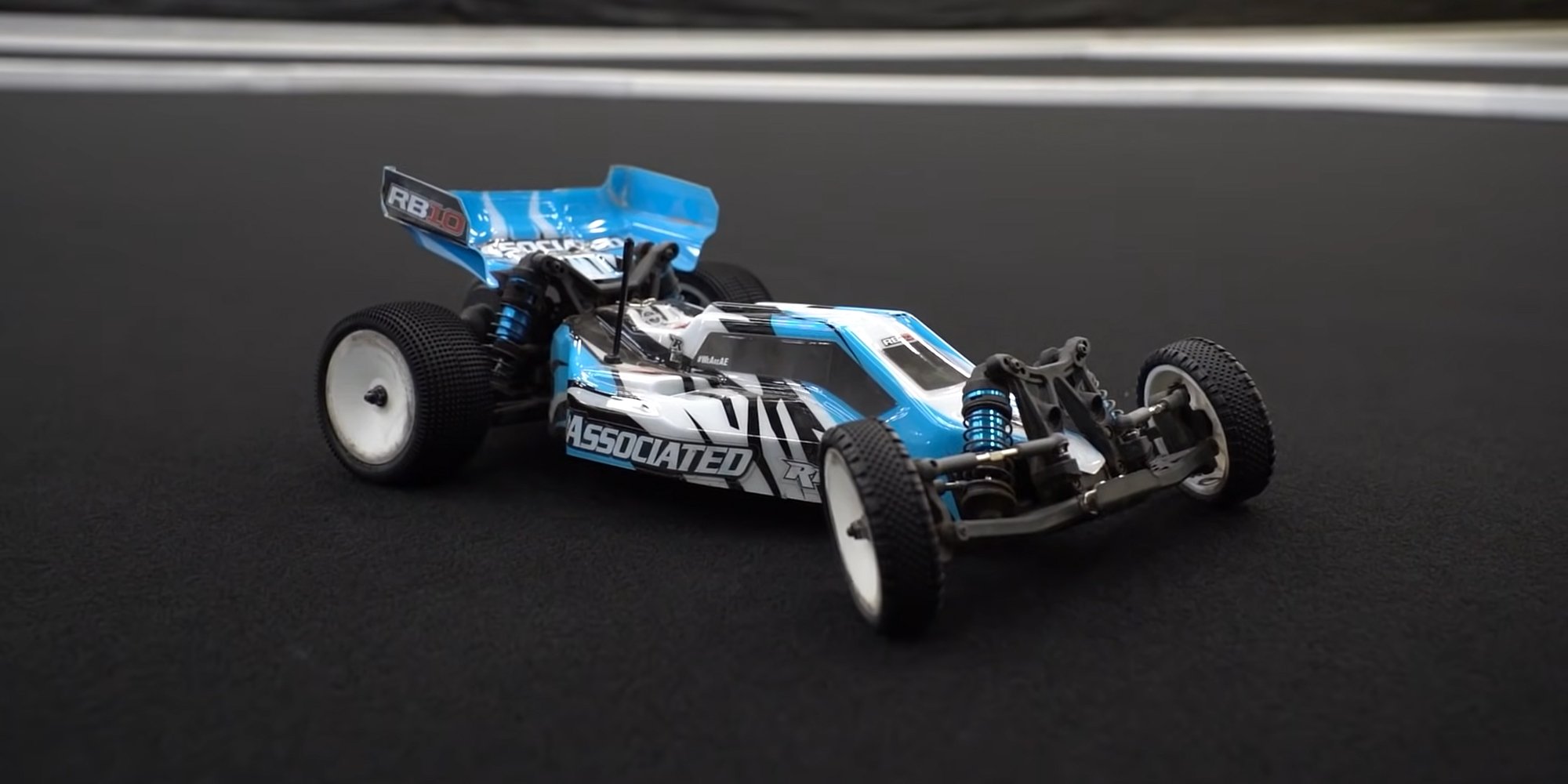
Watch Brett's Review
Review - RB10 2WD 1/10 Brushless Buggy
Watch the "RB10 2WD 1/10 Brushless Buggy Review" on our YouTube channel, and while you're there, be sure to check out more new product review videos.
Featured Items
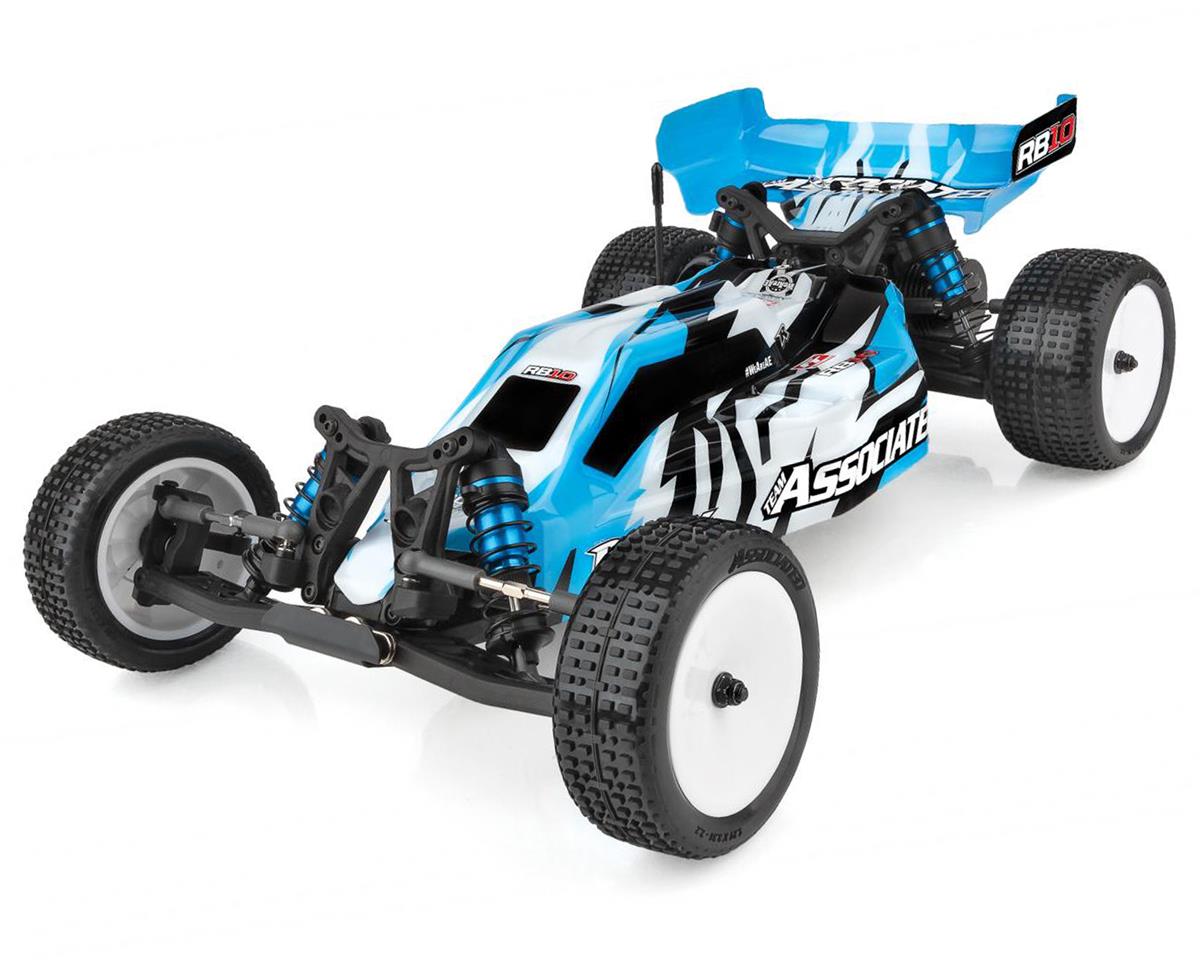
Team Associated RB10 RTR 1/10 Electric 2WD Brushless Buggy (Blue) w/2.4GHz Radio & DVC ASC90031
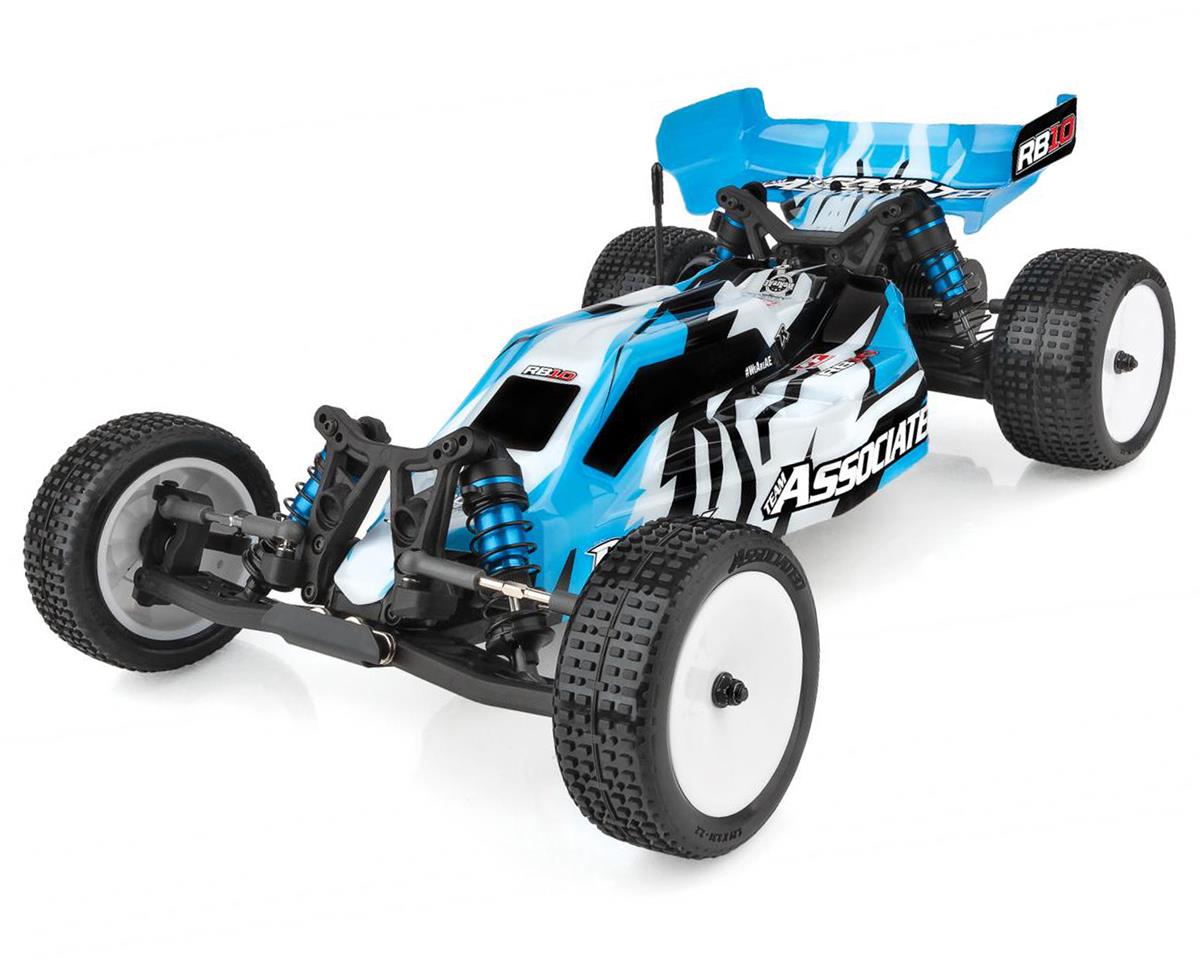
Team Associated RB10 RTR 1/10 Electric 2WD Brushless Buggy Combo (Blue) w/2.4GHz Radio, DVC & Battery & Charger ASC90031C
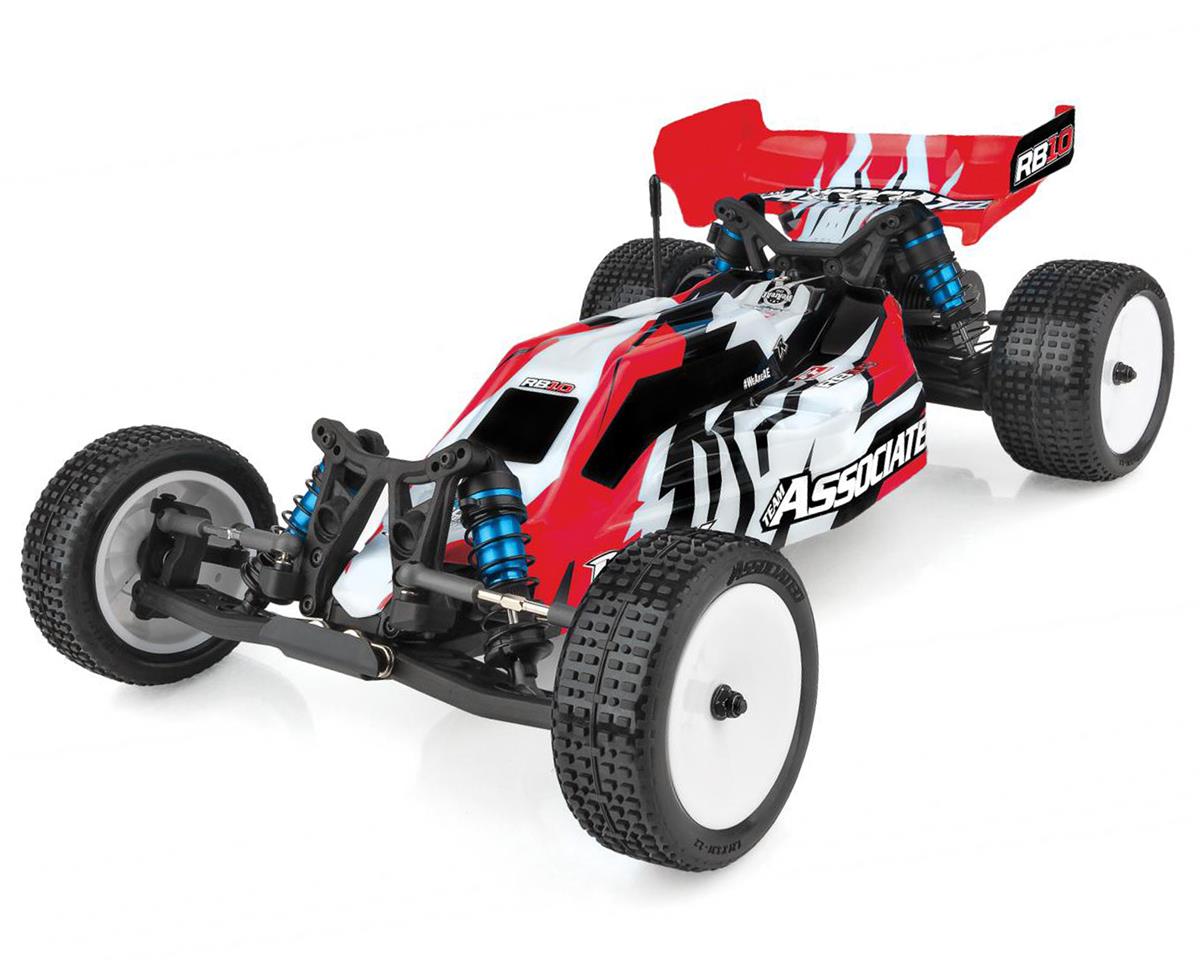
Team Associated RB10 RTR 1/10 Electric 2WD Brushless Buggy (Red) w/2.4GHz Radio & DVC ASC90032
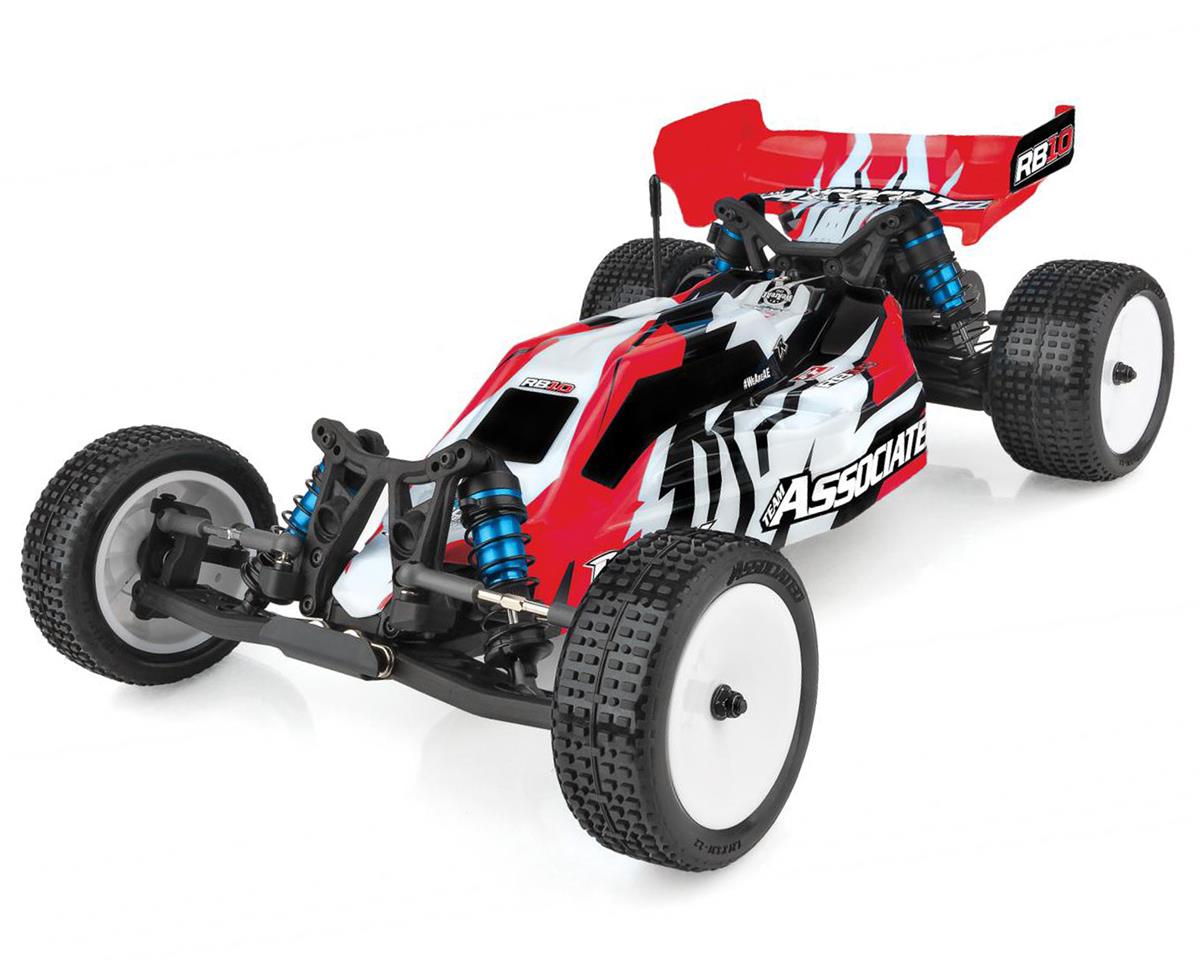
Team Associated RB10 RTR 1/10 Electric 2WD Brushless Buggy Combo (Red) w/2.4GHz Radio, DVC & Battery & Charger ASC90032C
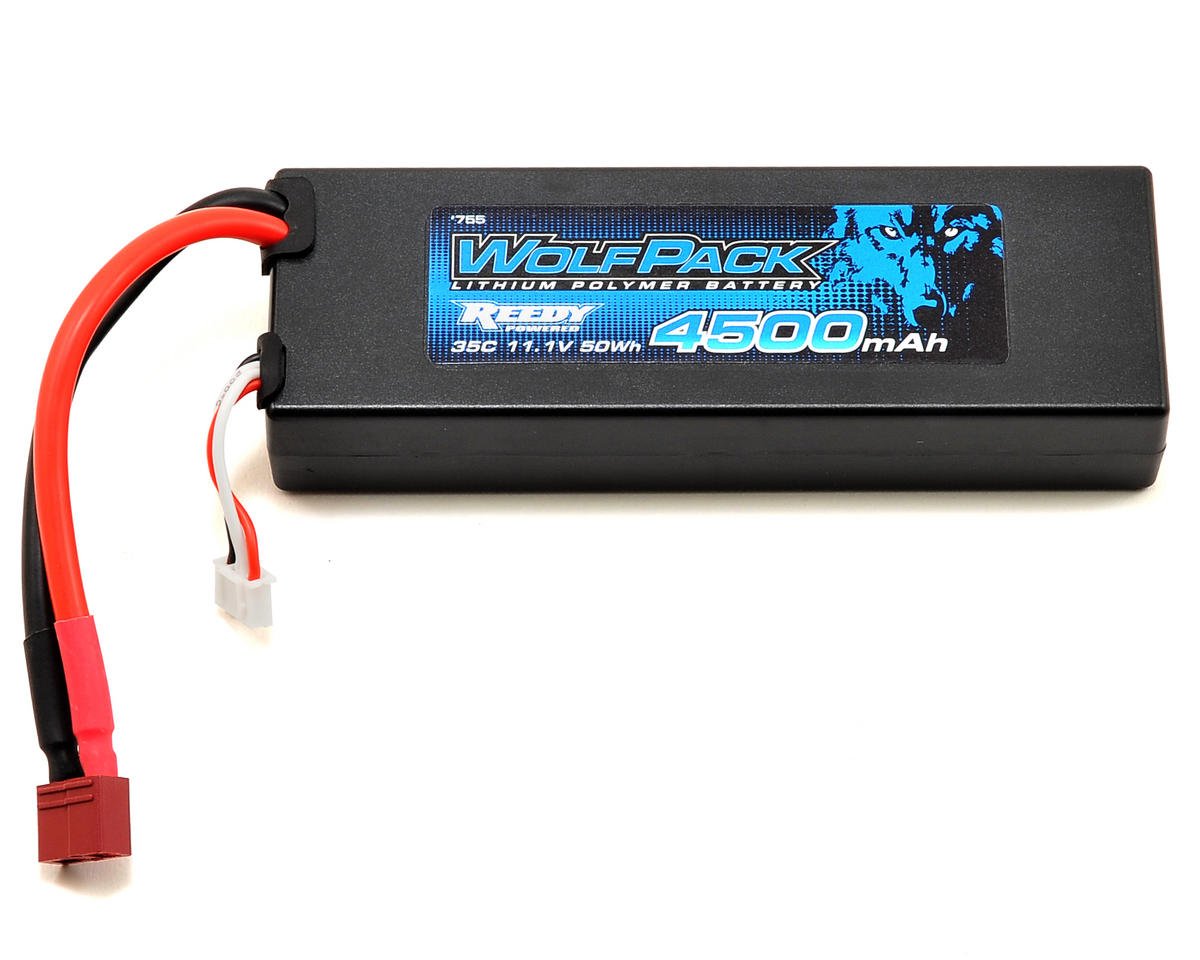
Reedy WolfPack 3S Hard Case 35C LiPo Battery Pack (11.1V/4500mAh) w/T-Style Connector ASC755
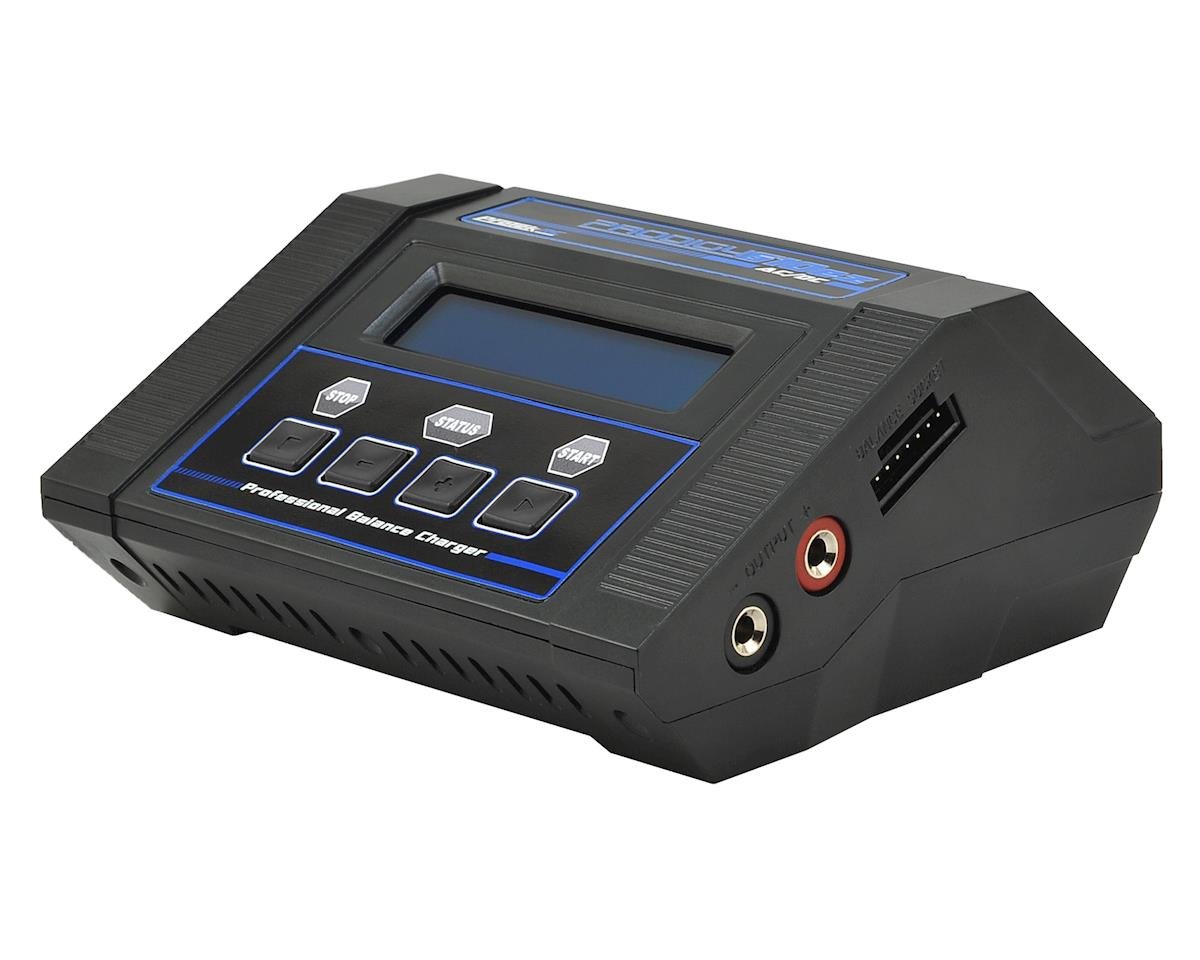
ProTek RC "Prodigy 610ez AC/DC" LiHV/LiPo Balance Battery Charger (2-6S/10A/100W) PTK-8522
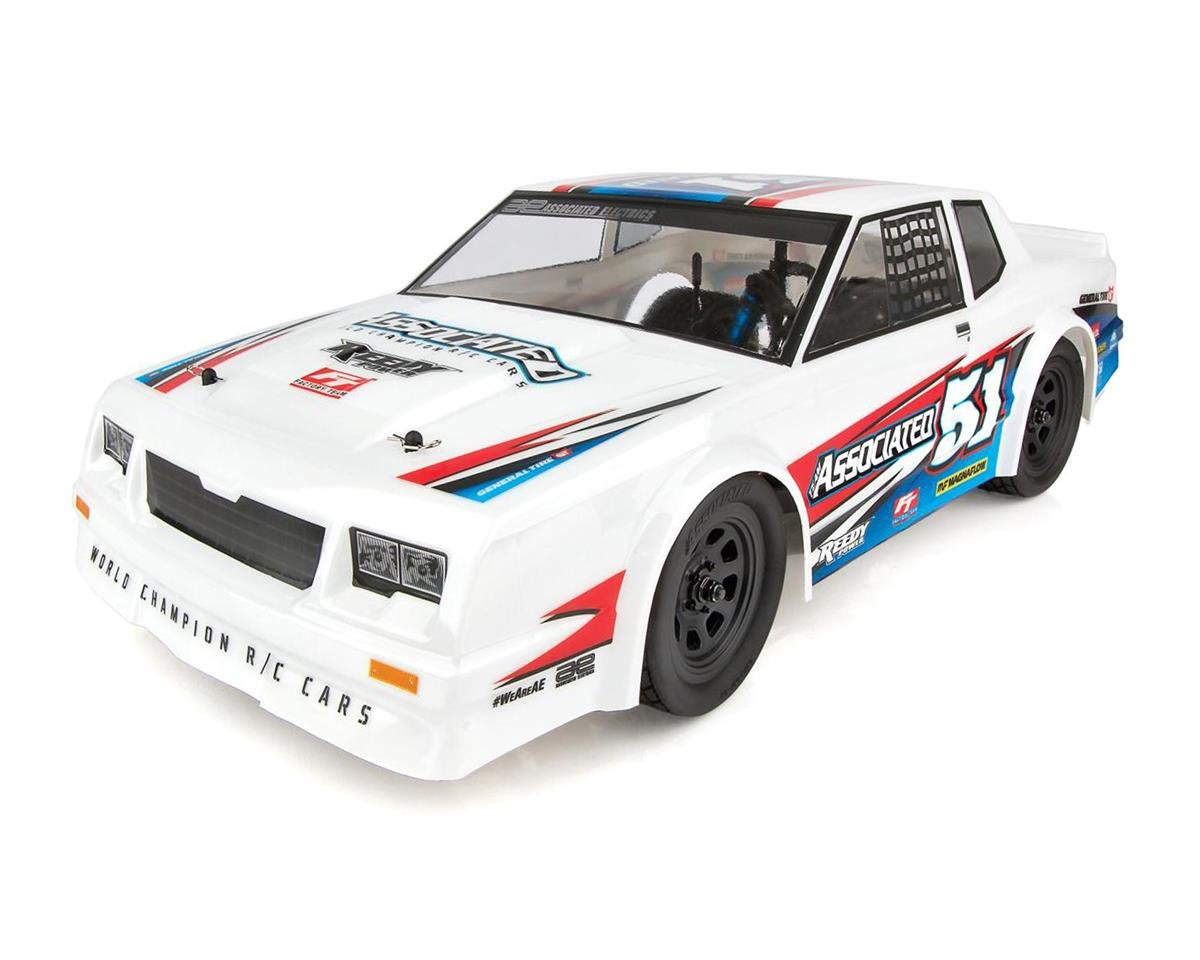
Team Associated SR10 RTR Brushless Dirt Oval Car w/2.4GHz Radio & DVC ASC70030
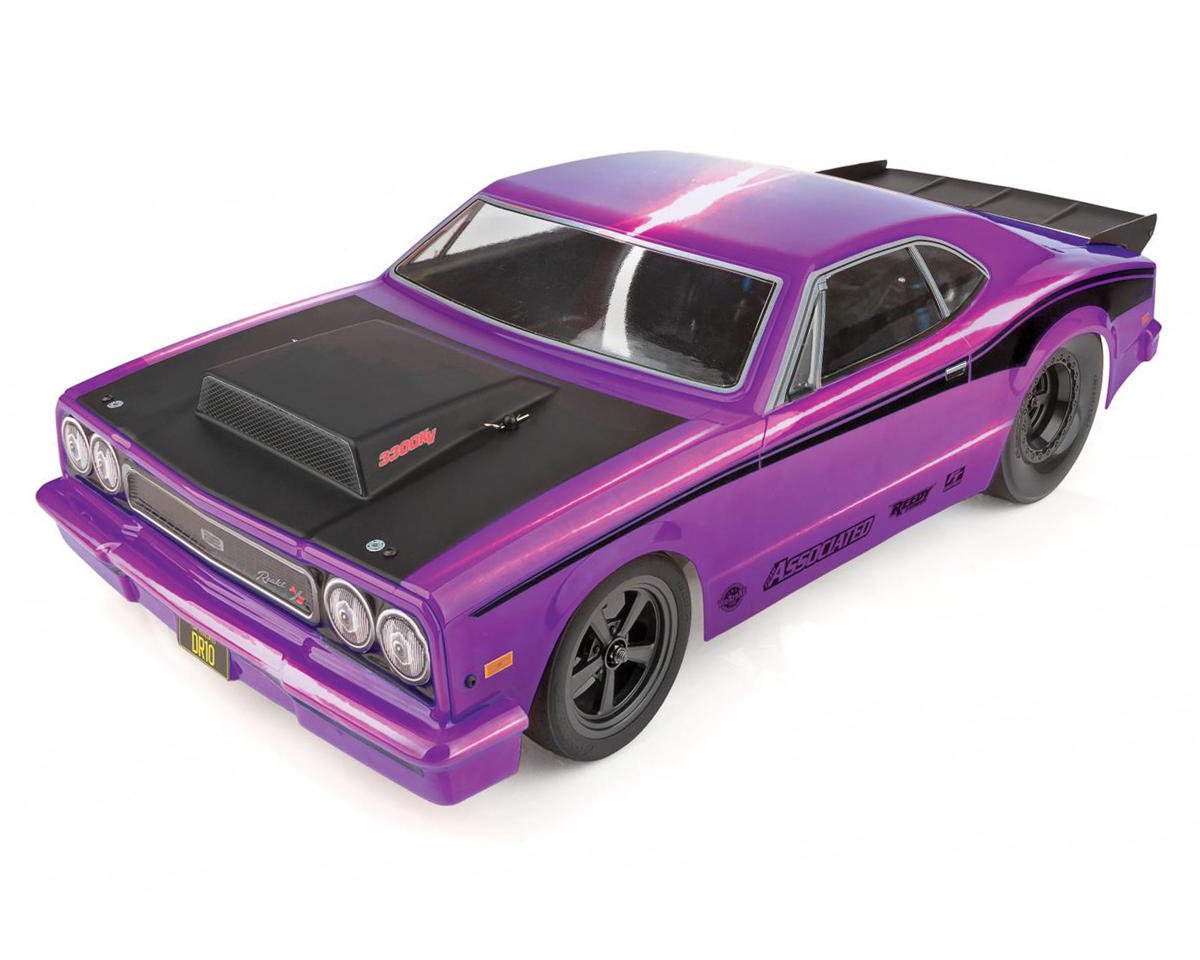
Team Associated DR10 RTR Brushless Drag Race Car (Purple) w/2.4GHz Radio & DVC ASC70028

